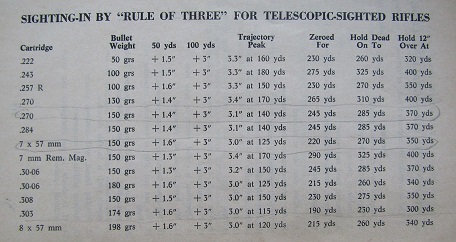Woaahhh way too much info!
Draw a triangle. It's the horizontal axis that is the true ballistic distance.
Welcome guest, is this your first visit? Create Account now to join.
Welcome to the NZ Hunting and Shooting Forums.
Search Forums
User Tag List
+ Reply to Thread
Results 16 to 30 of 67
Thread: Downhill shot
-
04-04-2023, 08:58 PM #16Member

- Join Date
- May 2018
- Location
- Queenstown
- Posts
- 2,113
-
-
05-04-2023, 12:50 AM #17Member

- Join Date
- Dec 2021
- Location
- Tauranga
- Posts
- 6,398
Interesting, I haven't seen such a big difference between up angle and down angle as in that table before. Dunno what that means, guess you'd need to check it and verify it by shooting. There was a manual device in the past called a 'Mil Dot Master' that used a string and a weight to give you the angle then that gave you a correction for range as estimated off the mildots in the scope. Surprisingly accurate to be fair, but a wee bit of fluffing about to achieve the corrections...
-
05-04-2023, 08:00 AM #18
Geez I can't understand why all the confusion over a 300yard shot, my range finder has TBR so I just use the TBR corrected distance it gives me and it's been good enough, I shot a spiker last week decent downhill angle at 400yards hit it exactly where I wanted.
Mate shot a stag same trip 682yards very steep uphill shot and tbr range was spot on too.
Am I missing something ?
We dial for our shots not holdover just for clarity #DANNYCENT
#DANNYCENT
-
05-04-2023, 08:08 AM #19Member

- Join Date
- Feb 2016
- Location
- Marlborough
- Posts
- 1,209
-
05-04-2023, 08:19 AM #20
There will be a slight difference between uphill and downhill. Uphill is going against gravity so will slow down a bit more, downhill is going with gravity so will slow down slightly less.
-
05-04-2023, 08:50 AM #21
I wouldn't have thought a 300y shot was that far to consider passing up, easily ethical with most centerfire offerings for example; a 270win with standard 130gn interloks zeroed at 200y is only 6" low at 300y, a good rest and holding a little high would easily see you sorted.
I do agree with the comment "get closer if you can, as you point out you've got to recover it anyway."#DANNYCENT
-
05-04-2023, 09:04 AM #22Member

- Join Date
- May 2022
- Location
- tauranga
- Posts
- 631
Some interesting stuff here for those who like to understand how things work
https://www.sierrabullets.com/exteri...inclined-fire/
-
05-04-2023, 09:05 AM #23Member

- Join Date
- May 2017
- Location
- Blenheim
- Posts
- 1,012
-
05-04-2023, 09:07 AM #24
Personally for a 300y shot I probably wouldn't bother dialing just hold a little high, job done
 #DANNYCENT
#DANNYCENT
-
05-04-2023, 09:19 AM #25
personally for a 300 yard shot the hold a little bit high is actually ONLY a little bit lmfao.....see above chart and knock and inch off/add inch on
 75/15/10 black powder matters
75/15/10 black powder matters
-
05-04-2023, 09:27 AM #26
-
05-04-2023, 09:30 AM #27Member

- Join Date
- Jan 2019
- Location
- South Canterbury
- Posts
- 1,683
Not really @dannyb, when shooting up or downhill the bullet drops less so aim a bit lower than a horizontal shot of the same distance.
-
05-04-2023, 09:33 AM #28
thus the add/deduct inch comment ...but youknew that.... actually matey..seen as though you have already done the flash harry chronicgraph thingy....just for shits n giggles can you PLEASE USE YOUR .308 LOAD DATA AND CHART and same with your dirty06ai and stick the new flash data up beside old old needs a zimmer frame data with as near of projectile weight as youve got...just so folks can see that real world difference isnt that huge
75/15/10 black powder matters
-
05-04-2023, 09:44 AM #29
-
05-04-2023, 10:35 AM #30Member

- Join Date
- Feb 2016
- Location
- Marlborough
- Posts
- 1,209
Similar Threads
-
Downhill shooting
By Scott29er in forum The MagazineReplies: 3Last Post: 13-12-2022, 08:22 AM -
uphill and downhill shooting
By northdude in forum ShootingReplies: 16Last Post: 08-06-2016, 08:31 PM
Tags for this Thread
Welcome to NZ Hunting and Shooting Forums! We see you're new here, or arn't logged in. Create an account, and Login for full access including our FREE BUY and SELL section Register NOW!!





 79Likes
79Likes LinkBack URL
LinkBack URL About LinkBacks
About LinkBacks



 Reply With Quote
Reply With Quote




Bookmarks